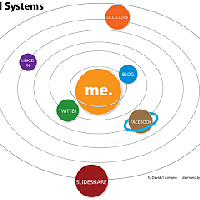Home
About Us
Page 2
a) The development or adaptation of integrated pest management tactics and technologies that would address specific pest problems in both pre- and post-harvest systems
|
|
b) The adaptation, evaluation, and demonstration of the effectiveness of modified or alternative integrated pest management tactics and technologies, including products of genetic engineering, biological organisms, biological pesticides, new chemical pesticides, and cultural practices
c) The execution of field demonstration programs and a detailed description of how anticipated results can be economically and effectively integrated into production systems for individual crops.
To support the realization of these objectives, NIFA is prepared to administer funds in the amount of $1,400,000 to worthy applicants who can manifest the ability to successfully carry out the responsibilities covered under the program guidelines.
NIFA will be accepting proposals and applications from State agricultural experiment stations, institutions of higher education such as colleges and universities, research establishments and organizations, federal government agencies, private organizations and corporations, as well as capable individuals.
Collaboration from the aforementioned eligible applicants are also encouraged by NIFA but they have stipulated that they won't be allowing applications from scientists affiliated with non-United States organizations.
The United States Department of Agriculture, the mother agency funding the Special Research Grants Program - Pest Management Alternatives, is the nation's leader in consistent and unrelenting anti-hunger efforts which are mostly done through product safety and conservation initiatives.
Special Research Grants Program - Pest Management Alternatives
Back to Page 1
About The Author Iola Bonggay is an editor of TopGovernmentGrants.com one the the most comprehensive Websites offering information on government grants and federal government programs. She also maintains Websites providing resources on environmental grants and grants for youth programs. |
Additional Resources
category - Environmental Grants
Department of the Interior: Community History of Former Village Sites in the Nabesna District Project
Alaska Native-Serving and Native Hawaiian-Seving Institutions Education Competitive Grants Program
Invasive Aquatic Species Inventory and Infestation Prevention Program
US Environmental Protection Agency: Russian Arctic Black Carbon, Reduction of Black Carbon from Diesel Sources
Follow @topgovtgrant
Social Entrepreneurship
Spotlight
Social Enterprise Version 2.0

Midsize businesses are tapping into the social business market because large companies do not need the help of start-ups to create a “social technology stack.” But a social business stack cannot generate revenue by itself.
